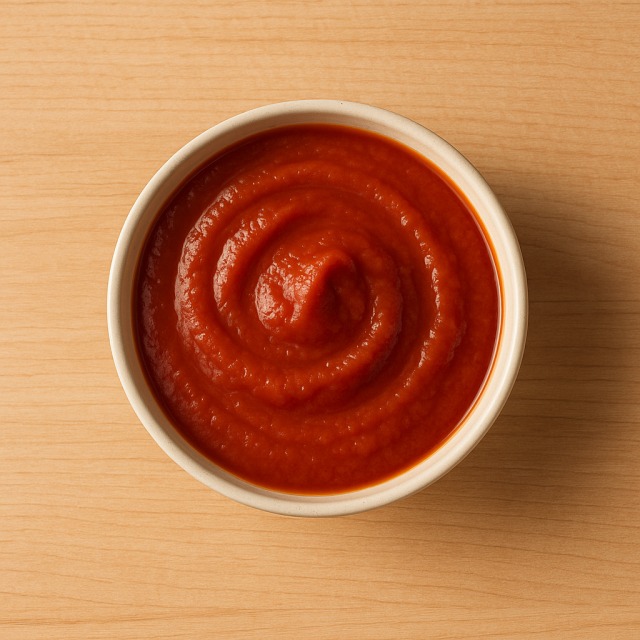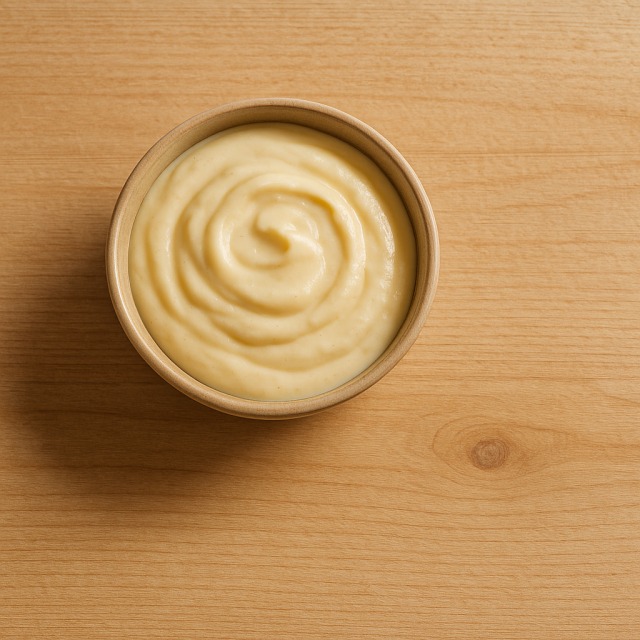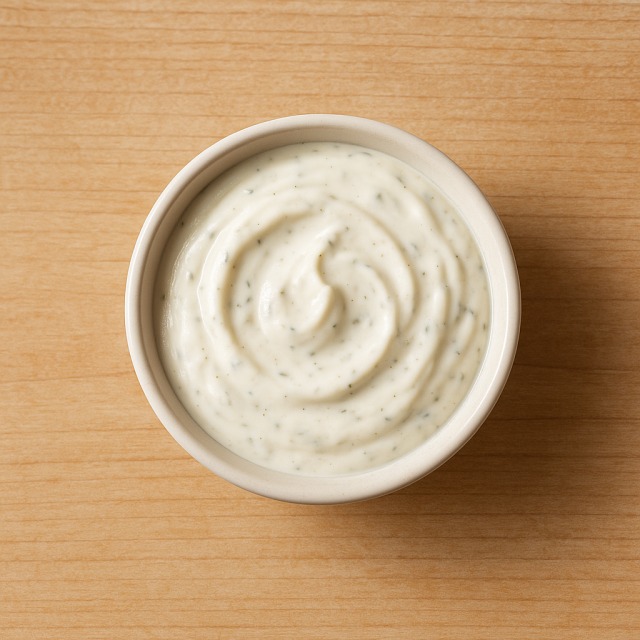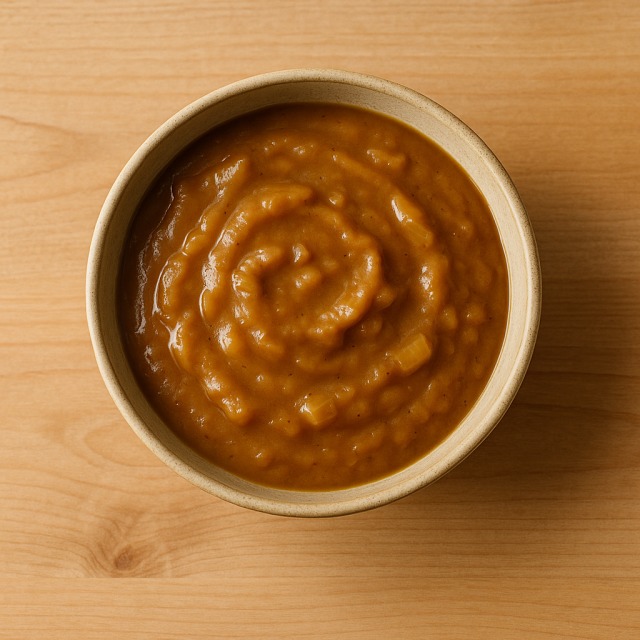Calorie Chart / Seasoning & Sauces / Pesto sauce
How Many Calories Are in Pesto sauce?
Calculation of the nutritional value & Recommended Dietary Intake of pesto sauce
For g and a calorie requirement of kcal
| Calories 95 kcal | Proteins 1.5 g | Lipids 9.5 g | Carbohydrates 1.1 g |
| 5% | 2% | 14% | 0% |
Health benefits of pesto sauce
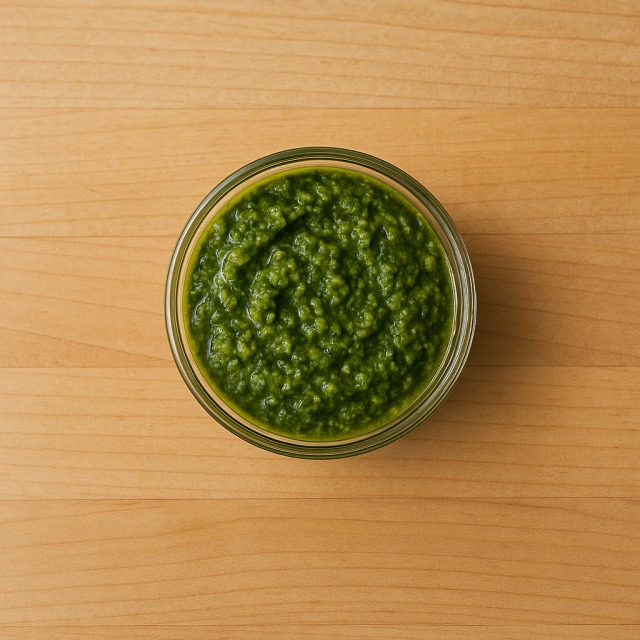
Pesto sauce - 100g
Calories 635 kcal
Proteins 10 g
Lipids 63 g
Carbohydrates 7 g
Pesto sauce is a high-calorie condiment – its 635 kcal per 100 g places it among the sauces richest in calories. Those calories come mainly from extra-virgin olive oil and pine nut kernels, which supply heart-friendly monounsaturated fats. Because of this dense calorie profile, a single spoonful can quickly energize an endurance athlete or tip the daily calorie quota of someone on a weight-loss plan. Keeping an eye on calories when you reach for the jar therefore matters.
Beyond calories, pesto delivers interesting micronutrients. Basil contributes vitamin K and beta-carotene, while olive oil offers vitamin E, a recognized antioxidant. Parmigiano cheese enriches the sauce with calcium and phosphorus for bone health, and the nuts add magnesium, zinc, and plant proteins. Some studies even suggest, in a supposed way, that the mix of polyphenols in basil and olive oil could have anti-inflammatory benefits.
The recipe is rooted in Genoa, Italy; the word "pesto" comes from the Genoese verb "pestâ," meaning "to pound," a nod to the mortar traditionally used. Knowing this history may inspire you to make your own and control calories through ingredient choices. Portioning a teaspoon instead of a ladle is the simplest strategy to enjoy flavor while respecting calorie goals.
Tips for incorporating pesto sauce into a balanced diet
To keep calories in check, measure one tablespoon of pesto (about 80 calories) and toss it with a bowl of whole-grain pasta or spiralized zucchini. The starch or vegetable soaks up the aromatic sauce, so you need less, saving calories while maximizing taste.
For a protein-rich yet moderate-calorie plate, brush pesto on a grilled chicken breast or a fillet of salmon just after cooking; you gain flavor without the extra calories of breading or heavy cream sauces. Complete the dish with steamed green beans or a crisp salad.
If you want an even lighter spread, blend two parts pesto with one part fromage blanc 0%. This cuts calories by almost a third yet preserves the basil punch. The mixture doubles as a dip for cherry tomato halves, as a dressing for classic mozzarella and tomato salad, or as a swirl in vegetable soup. Always taste first—because its calories are concentrated, a small dollop often suffices.
Frequently Asked Questions
- How many calories are in pesto sauce?
- There are 635 kcal per 100 g, a figure that makes pesto one of the most concentrated sauces in calories.
- Is pesto sauce lower in calories than mayonnaise?
- Pesto and mayonnaise are both dense in calories, but 100 g of classic mayonnaise averages around 700 kcal, slightly more than pesto. However, pesto calories come with extra vitamins and unsaturated fats.
- What is the best way to reduce calories when adding pesto to pasta?
- Use a measured teaspoon, loosen it with a little cooking water or lemon juice, and add lots of vegetables; you will coat each strand while cutting overall calories.
- Does heating pesto sauce change its calories or nutrients?
- The calories remain the same, but prolonged high heat can degrade heat-sensitive vitamins (especially vitamin K) and dull the fresh flavor; add it off the heat whenever possible.
- Can I freeze pesto without affecting its calories?
- Yes, freezing does not alter calories. Spoon portions into an ice-cube tray, freeze, then transfer to a bag; this also helps you defrost only what you need and manage calories better.
Similar foods
Information provided by Calorie Menu may contain inaccuracies or errors. It cannot, under any circumstances, substitute medical advice or medication.
